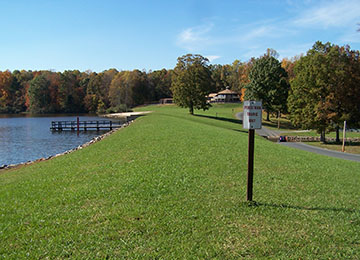Dams serve many functions. They provide a source for potable water systems, flood control, and recreational amenities. Dams can be found in many places: high in mountain valleys, in neighborhoods and parks, or within rivers. The Association of State Dam Safety Officials (ASDS0) website has a primer on dam safety, as well as videos showing how dams can fail in a rain event or even on a ‘sunny-day’.
Most dams are designed to hold back water during a storm and release it slowly through its principal spillway many hours after the storm begins. The basis of dam design is to safely pass a specified storm event typically expressed in inches of rainfall over a specified period. These design rain events are selected based on the hazards to life and property downstream. That is to say, the higher the hazard, the greater the storm that must be passed safely. The outlet works are designed to release these flows in a controlled manner over time. However, storms that exceed the rainfall rate, total volume, or rainfall intensity can exceed the design outflow capacity of a dam. For example, a dam designed for a single rainfall event may not be able to safely handle the combination of a nor’easter with a hurricane on its heels, coupled with a jet stream funneling rain into the affected area.
When a dam is in danger of an uncontrolled release of water, the dam’s emergency action plans becomes the playbook for the actions required of the owner, its engineer, and emergency services personnel. They work together with the community to let people know about hazardous situations and evacuate people from endangered downstream areas. It is vital that all the players be familiar with the playbook well in advance of an emergency. Members of the public need to be prepared to heed the direction of emergency officials if told to evacuate. Remember, just because it stopped raining doesn’t mean the danger has passed.
Is your residence or business in a dam inundation zone?
If you need emergency support for any of the issues we’ve described, ECS has dedicated a webpage to help our friends and neighbors in South Carolina recover from this natural disaster and its aftermath. To contact an ECS professional, just click here.

